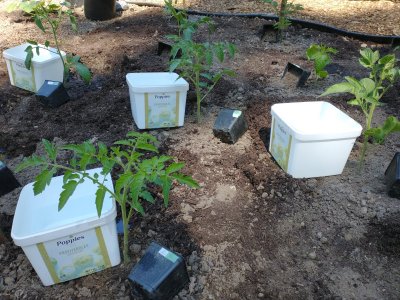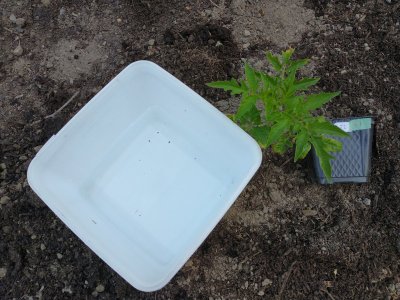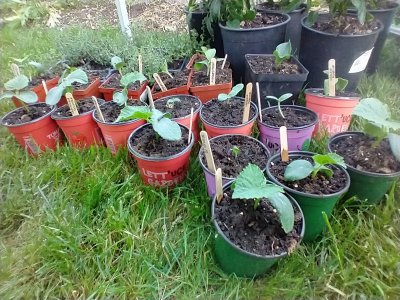- Thread starter
- #221
Branching Out
Garden Addicted
That is a helpful chart digitS-- thank you for posting it. When I pull up my tomato plants at the end of the season the roots never seem that deep, but it is the fine roots that go down for such a long way I think. Looks like many of you water tomatoes daily, which is not something I was expecting. I can see that it may be necessary though; my friend grows tomatoes in a very hot hoop house, so I suppose daily watering is necessary due to the excessive heat. Hoop house growing in not something I am familiar with, so this will be an interesting learning experience.
I still want to try infrequent watering for the tomato plants in the field though-- but my buddy has me a tad concerned about their demise so yesterday I used my 'drip irrigation system' to water those tomatoes deeply. It is a low-tech method where I use empty cream puff tubs that have a few holes drilled in one of the corners of each plastic container. I make a small impression in the soil under where the holes sit, and then fill up the tub allowing the water to percolate down. I filled the tubs three times, so each plant got a whopping 3 gallons of water. They won't be drying out anytime soon. My hope is that the roots will follow the water down deep.
What I like about my cream puff bucket drip irrigation system is that the buckets stack when not in use, I do not water the surrounding soil so few weeds germinate, I can fill the tubs quickly using water at high pressure, and while they water drips out I can take care of other tasks in the garden such as weeding or planting. I have been using the same buckets for several years now; they last a long time if stored indoors over the winter.
I still want to try infrequent watering for the tomato plants in the field though-- but my buddy has me a tad concerned about their demise so yesterday I used my 'drip irrigation system' to water those tomatoes deeply. It is a low-tech method where I use empty cream puff tubs that have a few holes drilled in one of the corners of each plastic container. I make a small impression in the soil under where the holes sit, and then fill up the tub allowing the water to percolate down. I filled the tubs three times, so each plant got a whopping 3 gallons of water. They won't be drying out anytime soon. My hope is that the roots will follow the water down deep.
What I like about my cream puff bucket drip irrigation system is that the buckets stack when not in use, I do not water the surrounding soil so few weeds germinate, I can fill the tubs quickly using water at high pressure, and while they water drips out I can take care of other tasks in the garden such as weeding or planting. I have been using the same buckets for several years now; they last a long time if stored indoors over the winter.
Attachments
Last edited:



